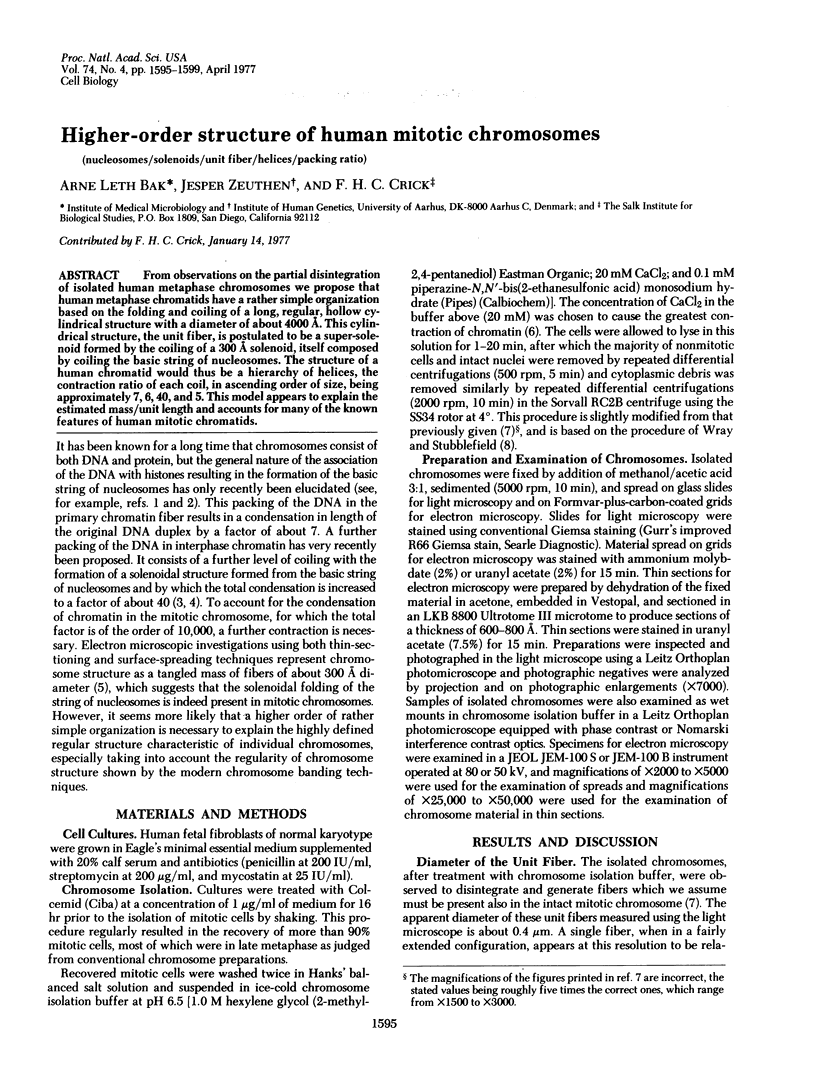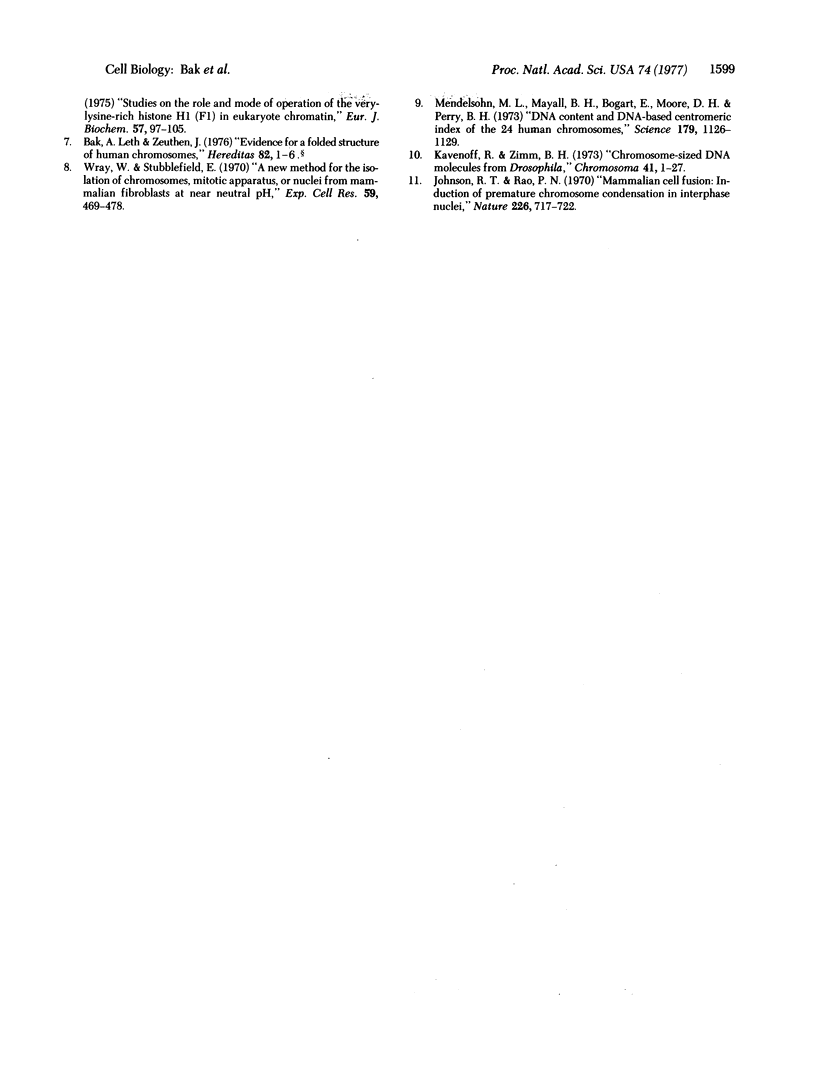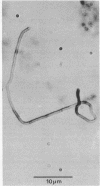Abstract
From observations on the partial disintegration of isolated human metaphase chromosomes we propose that human metaphase chromatids have a rather simple organization based on the folding and coiling of a long, regular, hollow cylindrical structure with a diameter of about 4000 A. This cylindrical structure, the unit fiber, is postulated to be a super-solenoid formed by the coiling of a 300 A solenoid, itself composed by coiling the basic string of nucleosomes. The structure of a human chromatid would thus be a hierarchy of helices, the contraction ratio of each coil, in ascending order of size, being approximately 7, 6, 40, and 5. This model appears to explain the estimated mass/unit length and accounts for many of the known features of human mitotic chromatids.
Full text
PDF




Images in this article
Selected References
These references are in PubMed. This may not be the complete list of references from this article.
- Carpenter B. G., Baldwin J. P., Bradbury E. M., Ibel K. Organisation of subunits in chromatin. Nucleic Acids Res. 1976 Jul;3(7):1739–1746. doi: 10.1093/nar/3.7.1739. [DOI] [PMC free article] [PubMed] [Google Scholar]
- Finch J. T., Klug A. Solenoidal model for superstructure in chromatin. Proc Natl Acad Sci U S A. 1976 Jun;73(6):1897–1901. doi: 10.1073/pnas.73.6.1897. [DOI] [PMC free article] [PubMed] [Google Scholar]
- Johnson R. T., Rao P. N. Mammalian cell fusion: induction of premature chromosome condensation in interphase nuclei. Nature. 1970 May 23;226(5247):717–722. doi: 10.1038/226717a0. [DOI] [PubMed] [Google Scholar]
- Kavenoff R., Zimm B. H. Chromosome-sized DNA molecules from Drosophila. Chromosoma. 1973;41(1):1–27. doi: 10.1007/BF00284071. [DOI] [PubMed] [Google Scholar]
- Kornberg R. D. Chromatin structure: a repeating unit of histones and DNA. Science. 1974 May 24;184(4139):868–871. doi: 10.1126/science.184.4139.868. [DOI] [PubMed] [Google Scholar]
- Mendelsohn M. L., Mayall B. H., Bogart E., Moore D. H., 2nd, Perry B. H. DNA content and DNA-based centromeric index of the 24 human chromosomes. Science. 1973 Mar 16;179(4078):1126–1129. doi: 10.1126/science.179.4078.1126. [DOI] [PubMed] [Google Scholar]
- Oudet P., Gross-Bellard M., Chambon P. Electron microscopic and biochemical evidence that chromatin structure is a repeating unit. Cell. 1975 Apr;4(4):281–300. doi: 10.1016/0092-8674(75)90149-x. [DOI] [PubMed] [Google Scholar]
- Wray W., Stubblefield E. A new method for the rapid isolation of chromosomes, mitotic apparatus, or nuclei from mammalian fibroblasts at near neutral pH. Exp Cell Res. 1970 Mar;59(3):469–478. doi: 10.1016/0014-4827(70)90656-7. [DOI] [PubMed] [Google Scholar]






